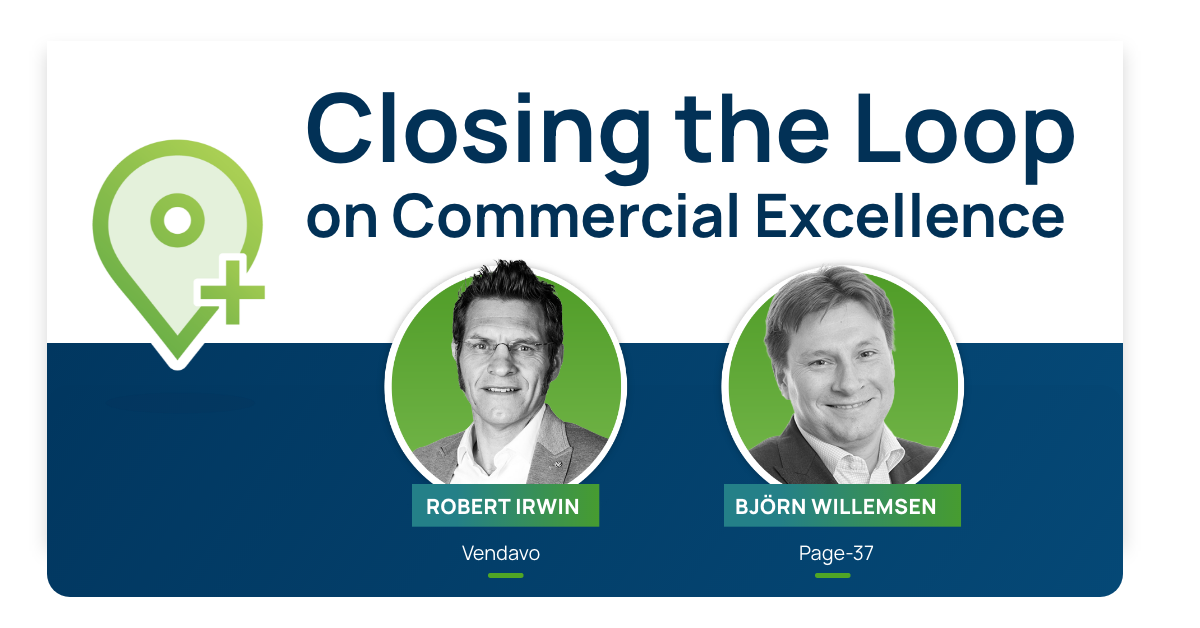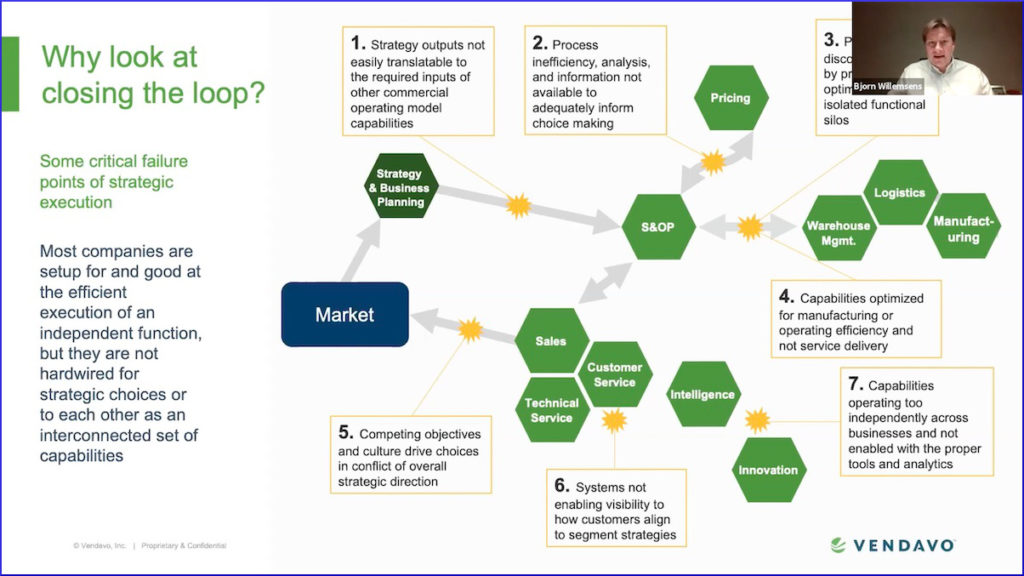
The modern B2B company has a plethora of irons in the fire. Gone are the days of firms specializing in only one or two products or services.
And it makes sense: A broad set of offerings diversifies risks and enables quick pivots into exciting and timely new sectors. However, this move towards variety can lend itself to a breakdown in communication between no longer unified teams and Business Units.
As it turns out, siloed organizations are often where ambitious ideas go to die.
To combat this, savvy companies recognize these breakdowns early on and get to work exploring the best ways to close the loop. In other words, they make Commercial Excellence a priority, and figure out how to best connect their distinct capabilities together to get the most out of their commercial activity.
In a recent webinar at Vendavo’s GPS 2021, Robert Irwin, Vice President of Business Consulting at Vendavo, and Björn Willemsens, Founding Partner at Page-37, discuss real-world case studies of companies looking to close the loop and achieve commercial excellence.
Siloed organizations are often where ambitious ideas go to die.
The Loop, Pictured as a Tire
In 1839, Charles Goodyear accidentally discovered the vulcanization of rubber and changed the course of transportation forever. The tire industry was born, and as the years went by, many tire industry business models were attempted, revised, and often permanently cast aside.
Fast forward to today, and the predominant ways that tire companies move product is through car manufacturers and repair channels. That’s to say these transactions are typically a step away from the end user.
But even within this B2B framework, a company like Goodyear can still influence consumer preference in the market. How? Take Intel for example. As a manufacturer of microprocessors, most consumers are not purchasing Intel components directly. However, Intel has identified how to influence consumer choice as a B2B brand by pitching the value of an Intel chip to those looking for a fully built computer. You’ve seen those little blue stickers on the inside of a new PC, right? That computer has “Intel Inside.”
Through clever branding, Intel turned their once-anonymous OEM company into a household name. The tire industry continues to face a similar challenge, and influencing car owners to hold strong preference for a brand with close substitutes is no easy feat.
However, these companies have the ability to create demand for their products, or loyalty to the brand, by experimenting with innovative business models. Take a tire subscription model for instance, or a partnership with a network of repair shops that exclusively work with your brand, or most daringly, creating a road travelers guide that goes on to become the world’s most respected accolade for fine dining (we’re looking at you, Michelin).
Oftentimes, being the first mover towards an innovative business or pricing model can disrupt the market, even if the product itself hasn’t changed.
Even in an environment of high competition with complex sales channels, tire companies have the ability to optimize revenue models by addressing end customers directly and streamlining the value chain in the process.
Oftentimes, being the first mover towards an innovative business or pricing model can disrupt the market, even if the product itself hasn’t changed. But that’s easier said than done because from there, the issue becomes pivoting in a way that doesn’t fracture the rest of the organization.
Where the Rubber Meets the Road
Regardless of the specific strategy you employ, the important takeaway is this: Any change in a business model, regardless of how revolutionary, requires a comprehensive effort to get the other parts of the organization on board. Otherwise, you’re not closing the loop in terms of properly allocating resources in the interest of your organizational direction.
According to Robert Irwin of Vendavo, “stakeholders underestimate the consequences of their actions — they don’t communicate — they don’t prepare the broader organization [for the change].” This lack in communication and preparation is often what contributes to the downfall of an otherwise game-changing idea.
In the following slide, Björn Willemsen, of Page-37, explains the specific challenges that arise for organizations that have stopped communicating effectively.

Most importantly, he explained how “most companies are set up for the efficient execution of an independent function, but they are not hardwired to each other as an interconnected set of capabilities.”
Therefore, it’s never been more crucial to take a look at your organization’s alignment on overall corporate strategy, communication channels, and commitment to commercial excellence.
For more insights and case studies from Robert and Björn, be sure to watch the webinar in its entirety, and learn how your organization can best position itself to close the loop and optimize strategic execution.
View Sessions On-Demand